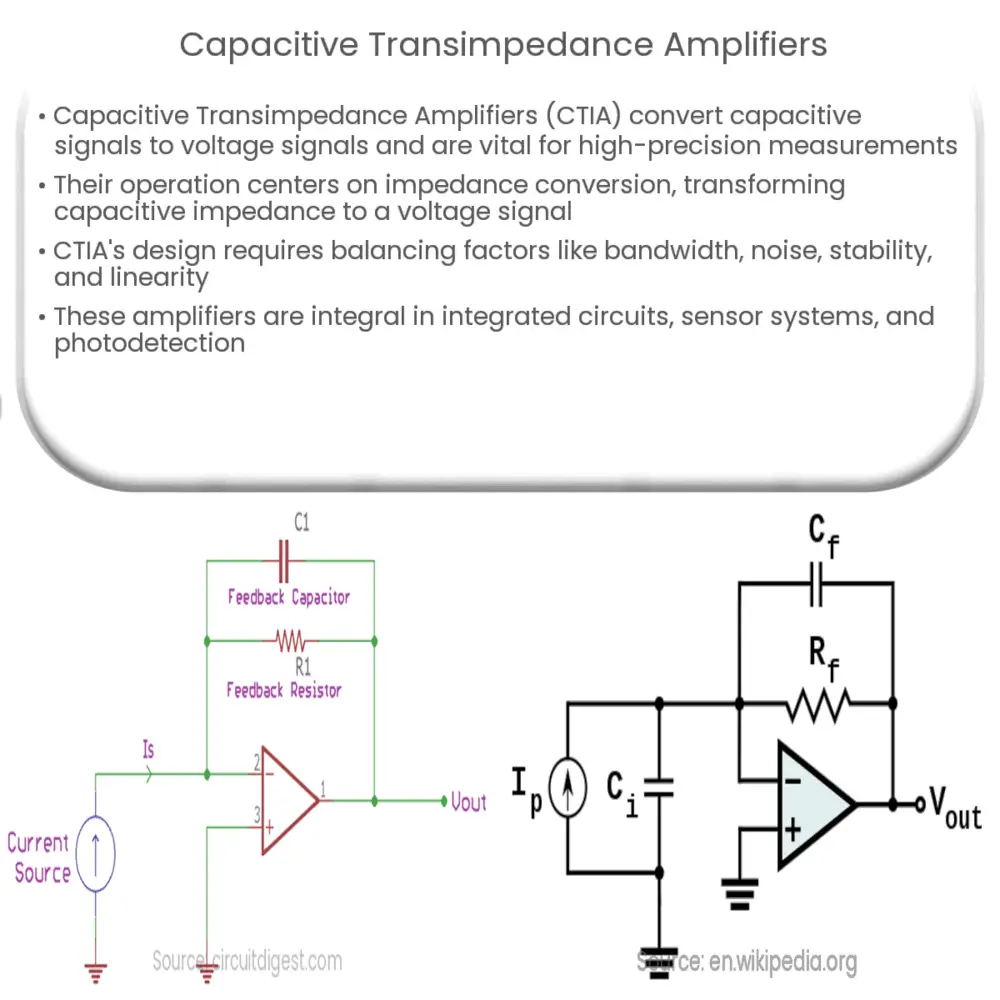Explore Capacitive Transimpedance Amplifiers: their principle, design considerations, applications, and their pivotal role in advancing electronics.

Introduction to Capacitive Transimpedance Amplifiers
Capacitive Transimpedance Amplifiers (CTIA) are a critical class of electronic amplifiers, often deployed in areas demanding high-precision measurement or data acquisition. Primarily used to convert a capacitive signal to a voltage signal, the operational flexibility of CTA amplifiers has made them the cornerstone of many technological applications.
The Basic Principle of CTIA
The fundamental operation of a Capacitive Transimpedance Amplifier revolves around the concept of impedance conversion. In this case, capacitive impedance is transformed into a voltage signal. This conversion is necessary for the appropriate interpretation of signals, as most electronic devices work more naturally with voltage or current signals rather than impedance signals.
- Impedance: In the context of electronics, impedance is a complex measure of opposition to electrical flow comprising both resistance and reactance. Capacitive impedance refers specifically to the reactance provided by a capacitor.
- Transimpedance: Transimpedance, as the name suggests, indicates the transition from impedance to another type of signal. Hence, a transimpedance amplifier modifies the impedance signal into a more readily usable form.
Understanding the Mechanism
The CTIA operates on a simple but effective mechanism. When a change in capacitive load (ΔC) occurs, a corresponding change in voltage (ΔV) is observed across the amplifier’s output. In other words, it can be expressed as the proportionality ΔV/ΔC, also known as the conversion gain of the CTIA. This principle is pivotal in many high-precision applications that demand accurate signal conversion and amplification.
Design Considerations and Applications
While designing a Capacitive Transimpedance Amplifier, several factors come into play that directly influence its efficiency and performance. Some of these include bandwidth, noise, stability, and linearity. CTIA has been embraced in numerous areas of technology, including integrated circuits, sensor systems, and photodetection, where precise impedance to voltage conversion is essential.
As we delve deeper into the realms of advanced electronics, the role of devices like the CTIA becomes increasingly significant. Understanding the mechanisms of such devices is not only interesting from a theoretical standpoint but also critical for enhancing the practical applications that they serve.
Key Aspects of CTIA Design
Designing a Capacitive Transimpedance Amplifier requires a thoughtful balance among various parameters. Key considerations include:
- Bandwidth: The frequency range over which the CTIA can effectively operate is defined as its bandwidth. An ideal CTIA should have a broad bandwidth to handle a wide range of input frequencies.
- Noise: Noise is an unwanted disturbance in an electrical signal. Low noise levels are desired in a CTIA to ensure accurate and precise signal conversion.
- Stability: Stability refers to the ability of the CTIA to maintain its performance over time and resist changes due to environmental factors or internal components aging.
- Linearity: A CTIA should have a linear response to changes in capacitive load, meaning that the output voltage change is proportional to the input capacitance change.
Applications of CTIA
Capacitive Transimpedance Amplifiers find utility in a wide array of applications:
- Integrated Circuits (ICs): CTIA are often used in ICs for their signal conversion capabilities, ensuring smooth and effective communication between different parts of the circuit.
- Sensor Systems: CTIA play an essential role in sensor systems, where they convert capacitive signals from the sensors into voltage signals that can be processed further.
- Photodetection: CTIA are also pivotal in photodetection systems, where they aid in the accurate conversion and amplification of light signals into electrical signals.
Conclusion
Capacitive Transimpedance Amplifiers are indeed powerful and versatile components in the world of electronics. Their capability to convert capacitive signals to voltage signals paves the way for enhanced precision and efficiency in numerous technological applications. However, while their operational principle is straightforward, the design of a CTIA demands a fine balance among several key parameters like bandwidth, noise, stability, and linearity. As we continue to push the boundaries of technological innovation, understanding and leveraging the potential of devices like CTIA will remain crucial in shaping the future of electronics.

